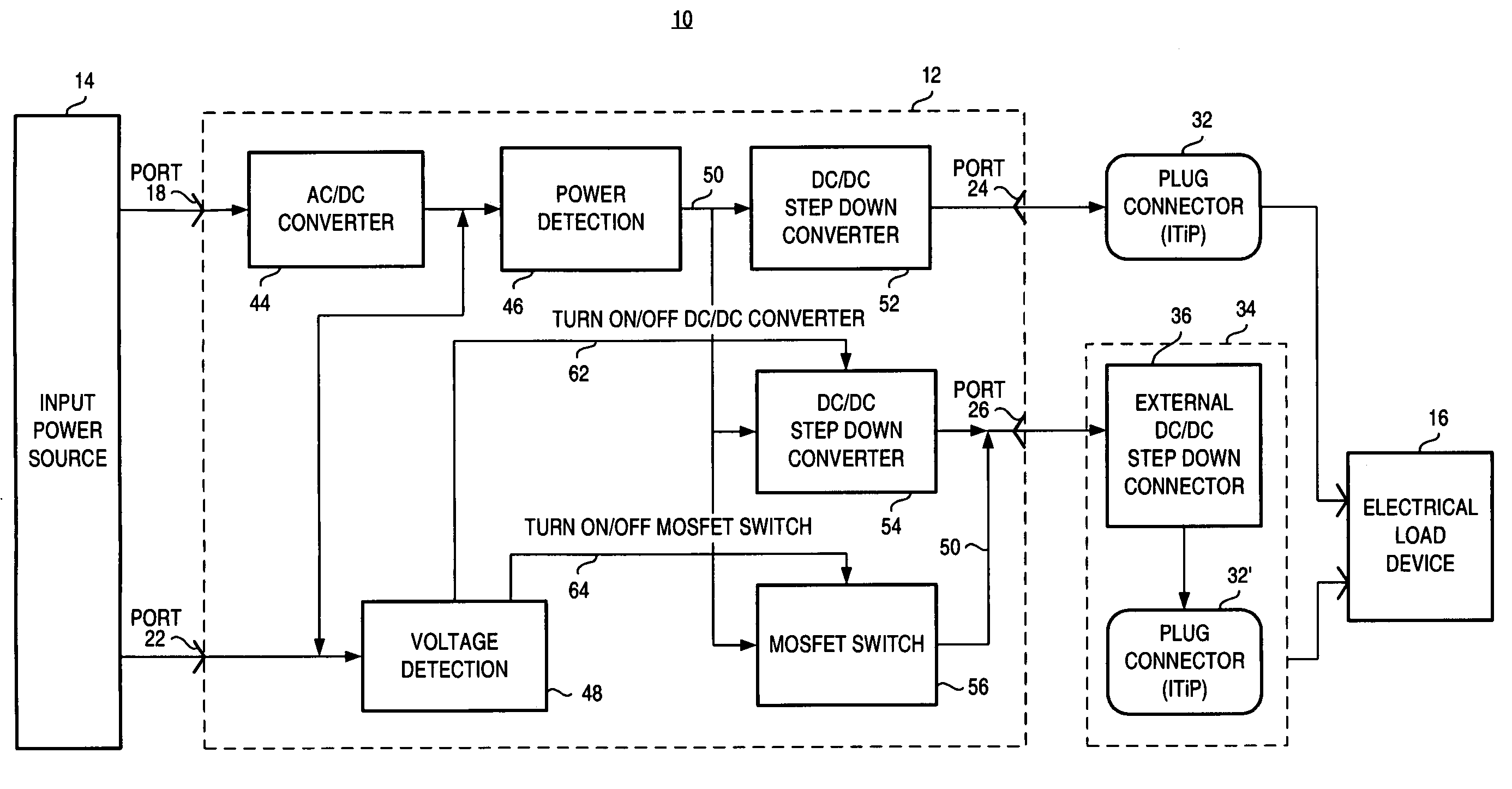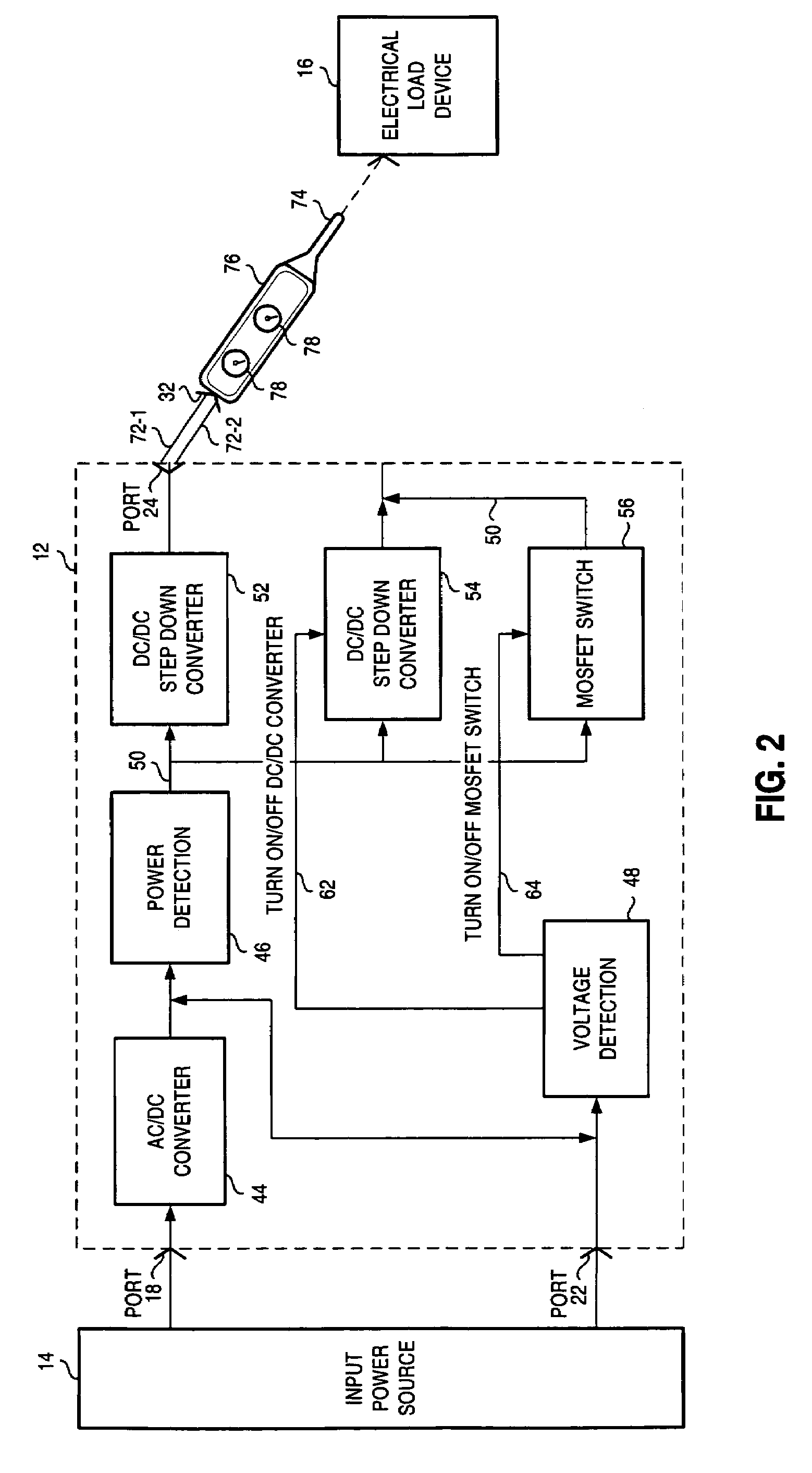Apparatus, and associated method, for converting electrical power into form for powering a load device
a load device and electrical power technology, applied in the direction of power conversion systems, dc source parallel operations, instruments, etc., can solve the problems of increasing the failure rate of the components of the converter, reducing the efficiency of power conversion operations, and disadvantageous heat generation, so as to achieve more efficient power conversion operations
- Summary
- Abstract
- Description
- Claims
- Application Information
AI Technical Summary
Benefits of technology
Problems solved by technology
Method used
Image
Examples
Embodiment Construction
[0026]FIG. 1 illustrates apparatus 10 that includes a power converter 12 of an embodiment of the present invention. The power converter operates to convert input power sourced at an input power source 14 into output form to facilitate powering of an electrical load device 16.
[0027]The load device is, in the exemplary implementation, a consumer electronic device that contains electrical circuitry that, when provided with appropriate levels of operative power, operates to provide the functions or services associated with the consumer electronic device. The following description shall describe an exemplary implementation in which the load device forms the consumer electronic device. In other implementations, however, the power converter provides operative power of characteristics for facilitating powering of other types of load devices. Accordingly, the following description is exemplary only.
[0028]In the exemplary implementation, the power converter 12 forms a dual input power convert...
PUM
 Login to View More
Login to View More Abstract
Description
Claims
Application Information
 Login to View More
Login to View More - R&D
- Intellectual Property
- Life Sciences
- Materials
- Tech Scout
- Unparalleled Data Quality
- Higher Quality Content
- 60% Fewer Hallucinations
Browse by: Latest US Patents, China's latest patents, Technical Efficacy Thesaurus, Application Domain, Technology Topic, Popular Technical Reports.
© 2025 PatSnap. All rights reserved.Legal|Privacy policy|Modern Slavery Act Transparency Statement|Sitemap|About US| Contact US: help@patsnap.com



